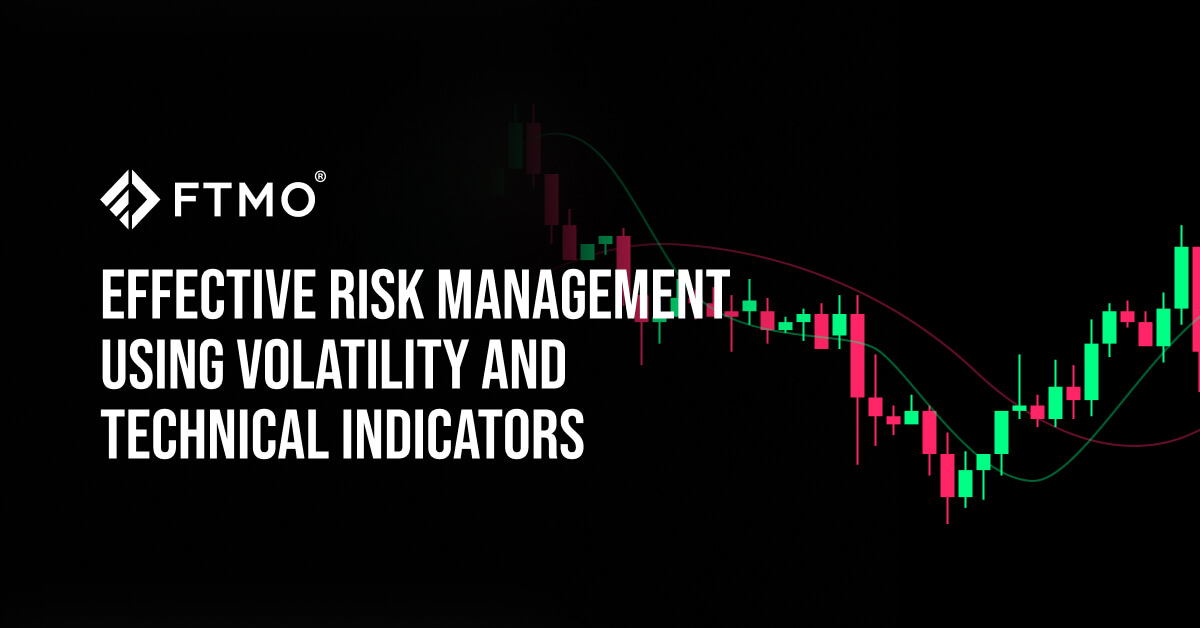
Effective risk management using volatility and technical indicators
Successful trading in the markets requires not only the ability to analyse the market situation correctly, but also a solid risk management system. The strategy we will describe today combines two key approaches: using historical volatility in pips and technical indicators to determine market direction, allowing traders to effectively manage risk and increase the probability of success.
The basis of the strategy is to adjust the Stop Loss (SL) based on average daily volatility, minimizing the risk of the SL getting triggered by normal market fluctuations. However, to ensure that trades are opened in the right direction, we use a combination of the RSI indicator to identify overbought and oversold zones and moving averages (MA).
Thanks to these elements, the strategy provides traders with a tool for day trading and medium-term speculation, where the emphasis is on capital protection, precise timing of entries and achieving consistent results.
Using indicators to determine direction
Indicator 1: RSI
- RSI is an oscillator that measures the speed and change of price movements.
- Trading rules:
- If the RSI exceeds 70, the market is overbought and we are looking for an opportunity to open a short position.
- If the RSI falls below 30, the market is oversold and we are looking for an opportunity to open a long position.
Indicator 2: Moving averages
- The combination of two moving averages (for example, 20-day and 50-day) is used to identify the trend. In our example, we used the Hull MA, which is popular among traders due to the fact that it is much "faster" than the regular SMA simple moving average. This allows it to better eliminate lags, which is one of the biggest negative features of SMA.
- Trading rules:
- If the HMA (20) crosses the HMA (50) to the upside, this is a signal to open a long position.
- If the HMA (20) crosses the HMA (50) downwards, it is a signal to open a short position.
Indicator combination rules
Combination of RSI and HMA rules
We open a trade only if the signals of both indicators match:
- RSI signals an overbought/oversold condition and exits the zone.
- Moving averages confirm the trend in the direction given by the RSI.
Example:
- RSI is below 30 (market is oversold) and HMA (20) gets above HMA (50) = Long position.
- RSI is above 70 (market is overbought) and HMA (20) gets below HMA (50) = Short position.
Timeframe
- The recommended time frames are H1 or H4, which provide enough signals without being affected by too small fluctuations.
Avoiding false signals
- We recommend not trading this strategy during major news or macroeconomic events.
Complete strategy
Conditions for opening a position
Long position
- The RSI is below the level of 30 and is leaving the oversold zone.
- HMA (20) crosses HMA (50) upwards.
Short position
- The RSI is above the 70 level and is leaving the overbought zone.
- HMA (20) crosses HMA (50) to the downside.
Stop Loss a Take Profit
- SL: 1.2× or 1.5× the average daily volatility.
- TP: Set to double or triple the SL distance, depending on the desired RRR.
Position size
- Calculated based on the maximum risk per trade (e.g. 1% of the account).
Practical example
Scenario for opening a long position
RSI drops below 30 and then climbs back above 30 (signalling an oversold market). In the image below, we see that after reaching a low on the price chart, the RSI dropped below 30 and then came back above it. We then wait for the signal to be confirmed on the price chart using moving averages.
HMA (20) crosses HMA (50) upwards (confirmation of the uptrend). A few candles later, the 20 HMA crosses the longer 50 HMA to the upside, confirming the trend.
The Standard Deviation indicator, shows us that the volatility over the last 60 days is very close to 60 and hence the Stop Loss will be based on that. Thus, in the chart we can see both the entry price and the SL and TP levels.
Entries
- Instrument: EURUSD
- 60-day volatility: 60 pips
- SL: 72 pips (1.2 x 60-day volatility)
- TP: 144 pips (RRR 2:1)
- Timeframe: H4
- Account Size: 100 000 USD
- Risk per trade: 1% (1 000 USD)
Calculation of position size
To calculate the position size, you can use our position size calculator, which you can find in the Client section of the Tools & Services panel. After entering the parameters (Symbol - EURUSD; Maximum Loss - 1 000 USD; Entry Price - 1.02760; Stop Loss - 1.02040), the position size will come out to be 1.39 lots.
After entering the position, the price of the currency pair went up and after a small swing, it finally reached the value set as Take Profit (in our case it was 1.04200) and the trade could end in profit. It should be noted that, as with all other strategies, it needs to be thoroughly backtested on historical data before deploying it in real markets. Trade safely!
All information provided on this site is intended solely for educational purposes related to trading on financial markets and does not serve in any way as a specific investment recommendation, business recommendation, investment opportunity analysis or similar general recommendation regarding the trading of investment instruments. FTMO only provides services of simulated trading and educational tools for traders. The information on this site is not directed at residents in any country or jurisdiction where such distribution or use would be contrary to local laws or regulations. FTMO companies do not act as a broker and do not accept any deposits. The offered technical solution for the FTMO platforms and data feed is powered by liquidity providers.
About FTMO
FTMO has developed a two-step evaluation process to find trading talents. Upon successful completion, you may be eligible for an FTMO Rewards Account with a balance of up to $200,000 in simulated funds. How does it work?
















